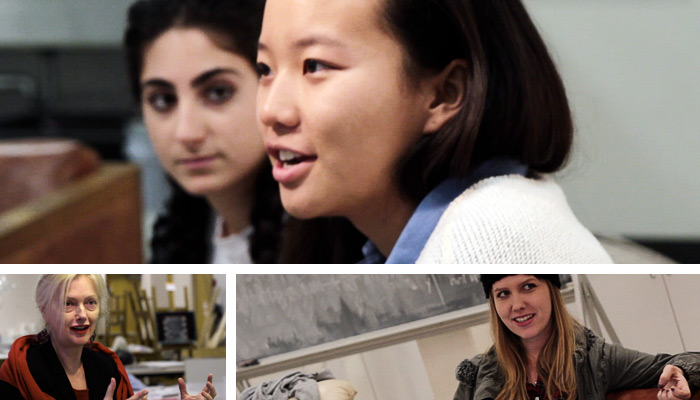
Los Angeles’ identity is deeply intertwined with the entertainment industry, particularly film and the actors whose fortunes rise and fall on the silver screen. But, as moviegoers, how aware are we of the influences and inner workings that define an entire region?
Professor Susan Rankaitis seeks illumination in Southern California and Hollywood Film: Human Dreams, Human Difference, and Human Desire, her Core III seminar. One of the most popular Core courses, it teaches students how to critically explore visual aspects of filmmaking – editing, cinematography, art direction, and more – by examining cultural, social, and political differences against the backdrop of the “California Dream.”
“For some, it’s the opportunity to learn about some of the history of Los Angeles; for others, it’s a chance to learn how to visually analyze a film,” says Rankaitis. “The majority of my students are science majors, and for many it’s the only film course or course about California that they have an opportunity to take.”
Through class discussions and research, students gain a deeper understanding of how films and other media have instilled preconceived notions into audiences’ mind. Julia Tambone ’17, for example, critiques the portrayal of homosexual couples in the media through the movies Mulholland Drive, A Marine Story, and The Kids Are All Right.
“It is no secret gay couples are extremely under- and mis-represented in the media,” she explains. “Even in seemingly ‘progressive’ films, there are stark contrasts between the heterosexual and homosexual couples.”
At the end of the semester, the class holds a student-conceived and directed film festival; this year’s selections include Her and A Marine Story. After the screenings, students draw from what they have learned to lead a discussion with the audience about the content of the films, Los Angeles history, and other ideas from previous Core classes.
While Core III introduces new topics, it also asks students to look back to previous Core sessions and apply theories studied to current classes.
“The theoretical tools from Core I and Core II, when added to the Core III readings in film history and theory, come together in ways we all felt made great closure with the Core experience,” says Rankaitis. “It reinforces the importance of the Core program in a Scripps education.”
And how did students feel about the year-and-a-half of Core classes?
“Core takes everything you see in the world and flips it on its head,” says Tambone. “I am able to see things in a different light, challenge what is unjust, and I now have the confidence to defend my arguments when doing so. That’s been the most valuable takeaway.”

